In early 2015, Oxalis Adventure– the only Vietnamese travel agency permitted to provide exploration tours to Son Doong cave – received an e-mail from Maria Stefanopoulos, production manager for ABC Broadcasting Corporation’s Good Morning America. In the letter, Stefanopoulos expressed her hope to broadcast live from the world’s largest cave for the American audience.
Son Doong is a natural cave located in Bo Trach district of Quang Binh province. It is the largest cave the world has ever known. Nestled in the Phong Nha – Ke Bang National Park, Son Doong is a part of an underground system that connects with 150 caves, close to the border between Vietnam and Laos.
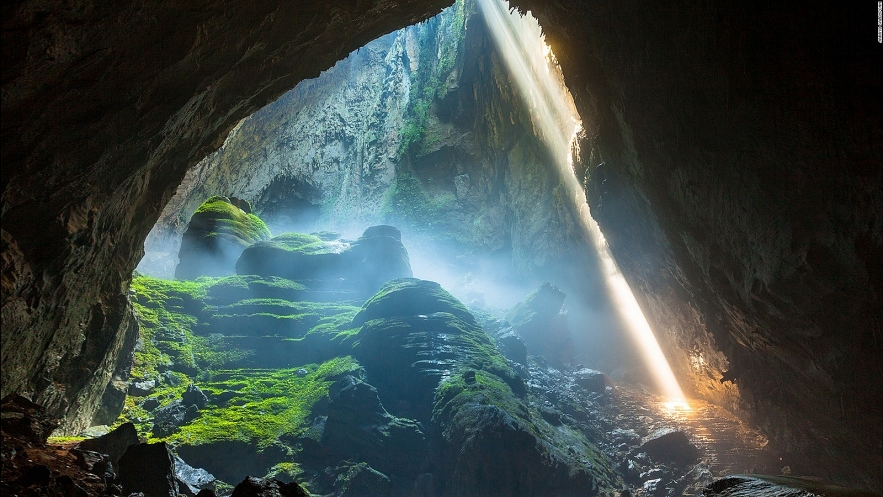 |
| Inside Son Doong, the world’s largest cave / CNN |
Oxalis Adventure CEO Nguyen Chau A said he was elated but not too surprised at the request. The collaboration with the American program was a part of Oxalis’ strategy to promote Son Doong. Chau A had previously invited the American travel photographer Ryan Deboodt to record documentaries and photos the cave to attract media attention, and eventually decided to work with ABC in hope of making the Son Doong exploration tour more widely known. The collaboration received permission from Quang Binh province and the Ministry of Foreign Affairs. In particular, Deputy Prime Minister Vu Duc Dam agreed to appear and talk about Vietnam in the live broadcast.
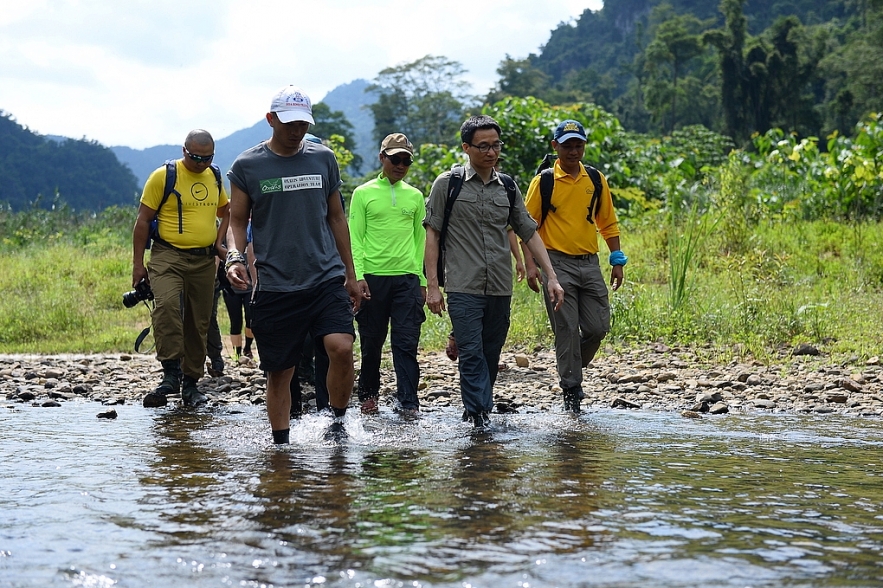 |
| Deputy Prime Minister of Vietnam Vu Duc Dam and Oxalis CEO Nguyen Chau A (right corner) headed toward En Cave on May 13, 2015 / Thuan Thang |
On May 6, 2015, a production team of 12 people arrived in Vietnam to prepare for the broadcast. The technical team came to Phong Nha – Ke Bang with their equipment, while the MC Ginger Zee came to Ha Long Bay by seaplane to prepare for the introduction.
Tens of helicopters carrying 150 locals brought four tons of equipment from Phong Nha to En Cave, the main location for the broadcast. En Cave was chosen to install equipment as it leads to Son Doong cave and is easier to traverse. Amid the scorching heat of central Vietnam, the staff were drenched in sweat, but nobody could hide their joy. In the United States, Vietnamese communities sent messages to Chau A to tell him they were distributing leaflets and introducing the program to their neighbors.
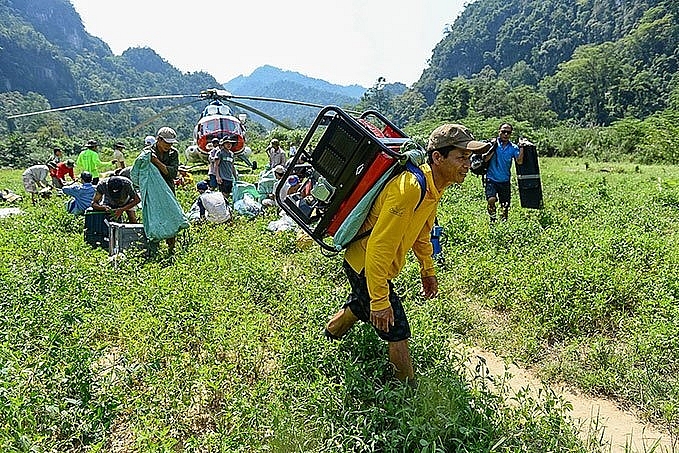 |
| Oxalis staff brought equipment to En Cave / Oxalis Adventure |
The MC Ginger Zee, producer Bratley Price and the camera crew brought seven fly cams and headed toward Son Doong to record extra shots on May 9. Accompanying them were 60 supporters, including experts from the British Cave Research Association. Standing in the largest cave in the world, Ginger said it felt like a scene from a science fiction movie. Son Doong was also the most remote and dangerous place she had ever been to.
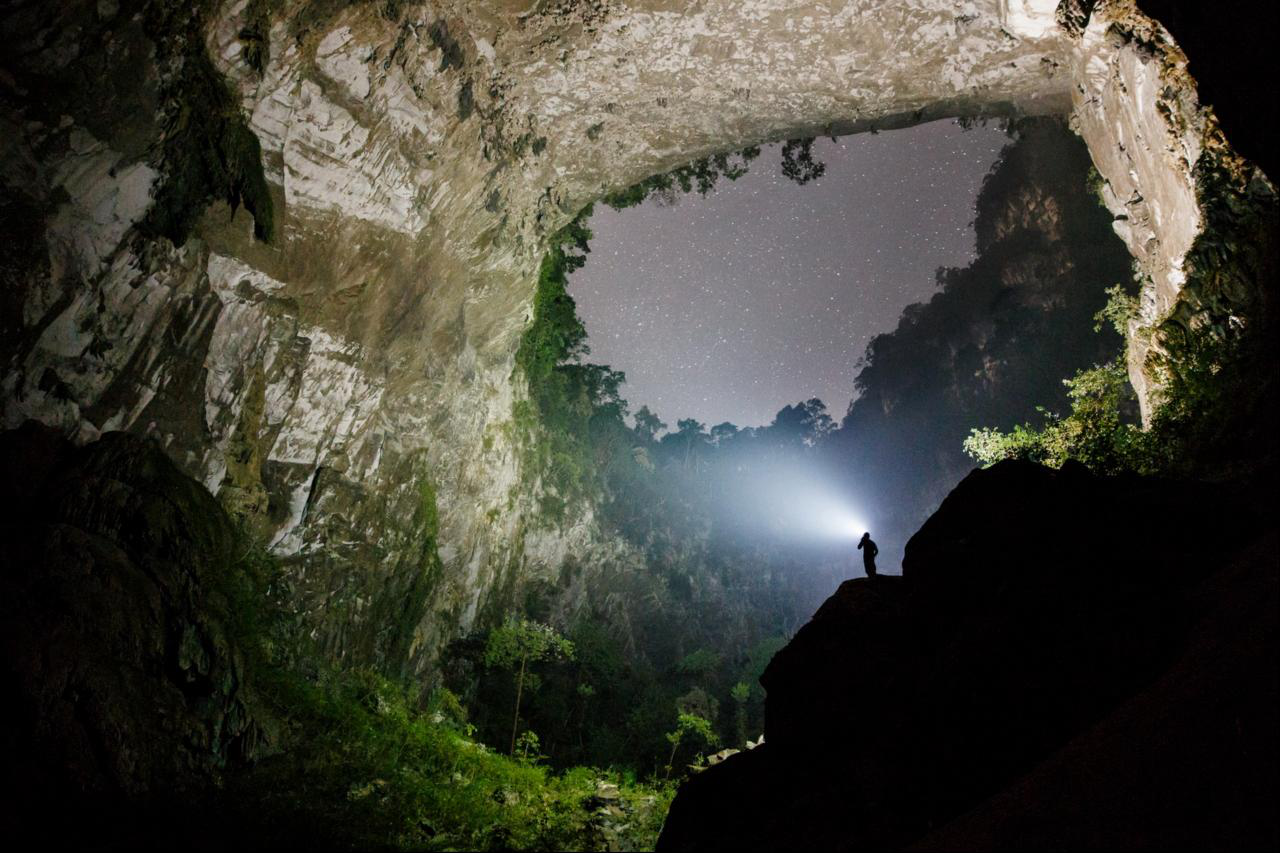 |
| Stargazing from Son Doong Cave / Sondoongcave.info |
On May 13, America welcomed a new day with the journey to discover Son Doong. Images of the Dolines (cave roof collapses) 1 and 2, the rainforest, the underground streams, the stalactites in different shapes and sizes, and mysterious wild animals appeared on the screen to millions of people.
From En Cave, Deputy Prime Minister Vu Duc Dam introduced Vietnam: “Today Vietnam is peaceful, safe and, I have to say, a very beautiful country with friendly people and a vibrant economy. Vietnam is one of the coolest places to live.”
The program about Son Doong attracted over 60 million views. According to the president of ABC, it was one of the largest programs outside of the United States that the corporation had ever done. The program received rave reviews not only from Americans but also from other audiences around the world.
In 2013 – the first year that the company was permitted to open the tour to Son Doong, Oxalis Adventure welcomed less than 300 visitors. After the program, the company welcomed about only about 500 tourists in 2015 and 2016, because of one limitation: Visitors were required to come in and out using the same route.
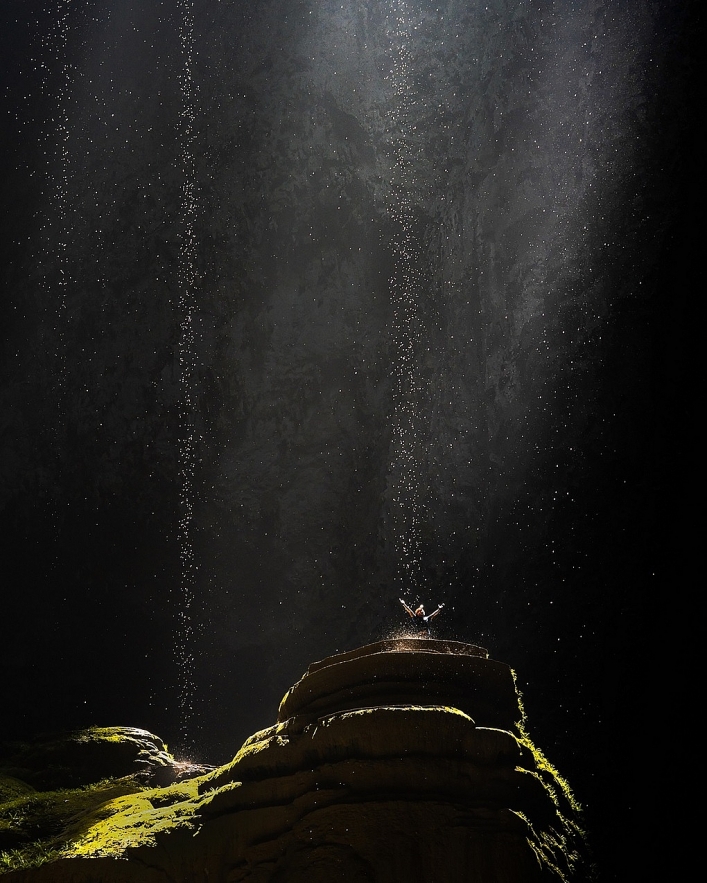 |
| Sunlight shines down on Son Doong cave’s Doline 2 / Tran Tuan Viet |
Since the route through the Great Wall of Vietnam was started, the Son Doong tour has been welcoming 1,000 tourists every year. This is the maximum number of visitors allowed to come to Son Doong annually, to preserve the cave and develop tourism sustainably.
“The Great Wall of Vietnam” is a giant block of stalactites located at the end of Son Doong cave, created during the geological formation of the Earth’s crust. This is the final destination in the tour of the world’s biggest cave.
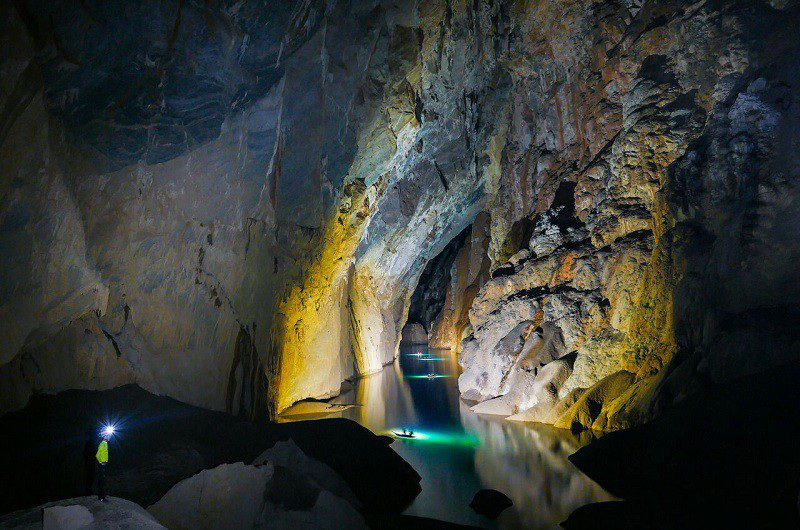 |
| The 500m-long lake that connects the main cave to the Great Wall of Vietnam / Dantri |
The highest spot on the Great Wall of Vietnam is 90 meters high. At the foot the stalactites lies a long lake where water can rise to 30 meters. When the water withdraws, a muddy route measuring 50 centimeters in depth appears. Once passing the Great Wall of Vietnam, tourists need to travel for another 600 meters to reach the exit.
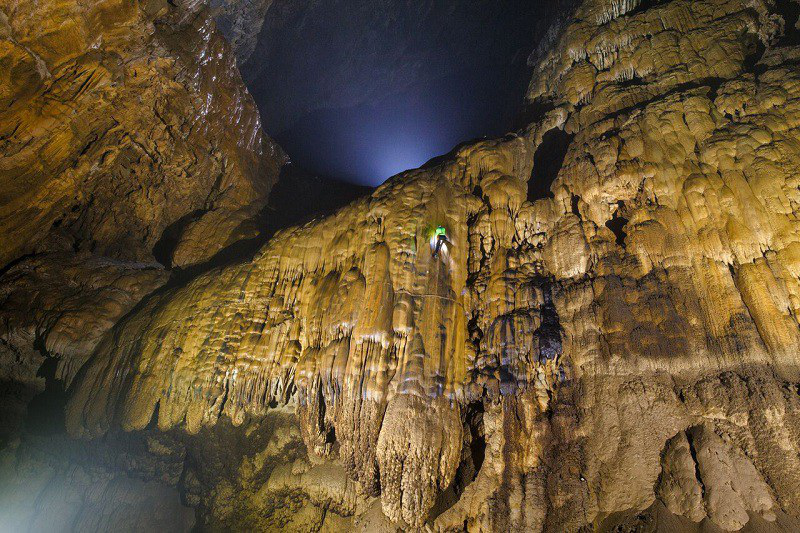 |
| A tourist climbing the Great Wall of Vietnam / Ryan Deboodt |
Lasting four days and three nights, the Son Doong exploration tour is categorized at Level 6 on Oxalis’ six-level scale of difficulty. Each tour allows a maximum of 10 tourists and 30 supporting staff, including cave experts, tour guides, safety assistants, chefs, and porters to ensure safety. Tourists are required to be physically fit and have experience trekking.
Nguyen Chau A, Oxalis Adventure CEO, said the number of tourists registering for the Son Doong tour has almost reached 1,000 by July 2021. The tour will not be operated from August 2021 until early 2022 to avoid the flooding season.



